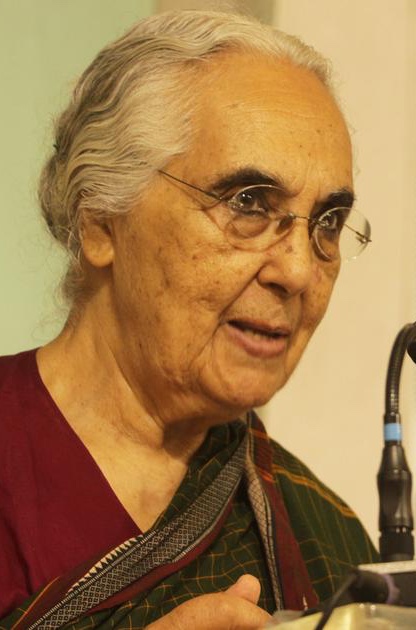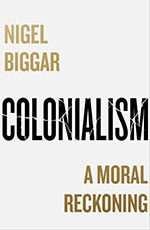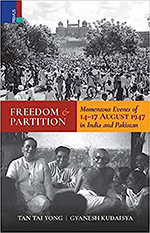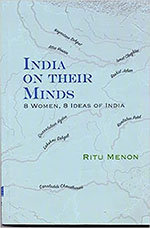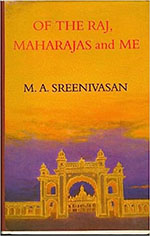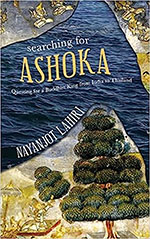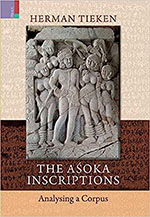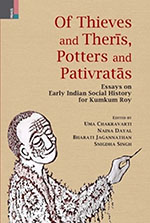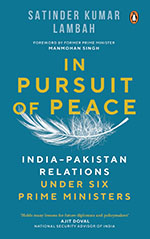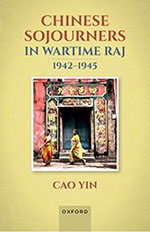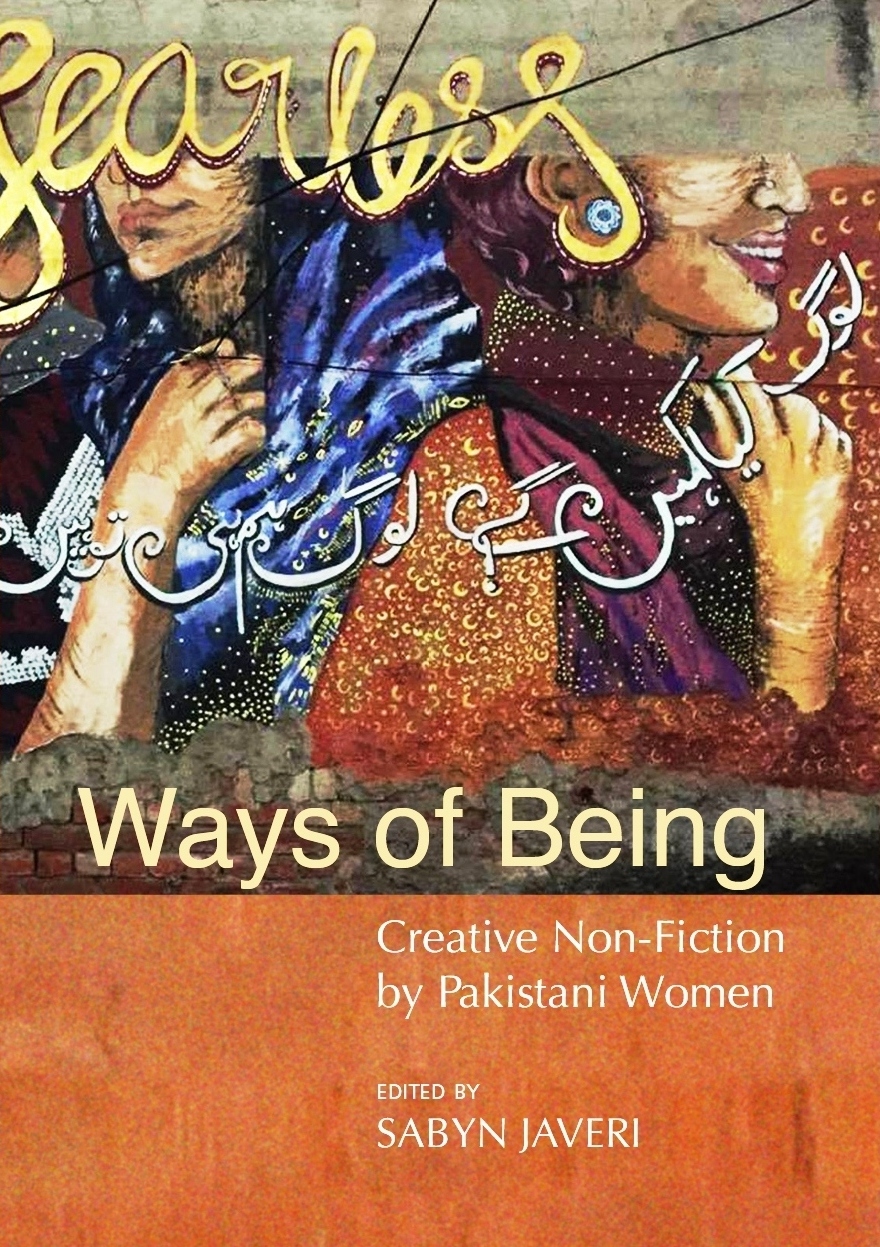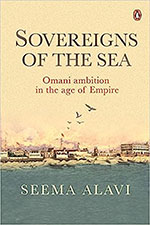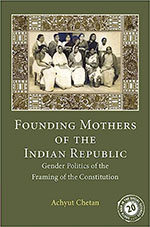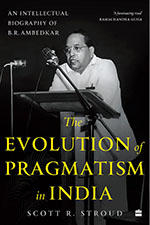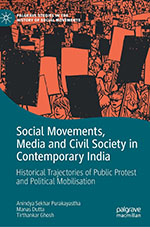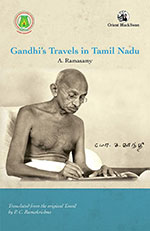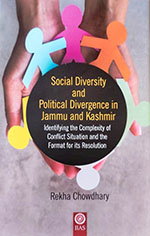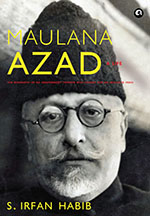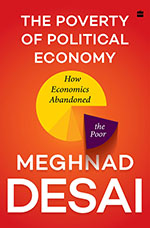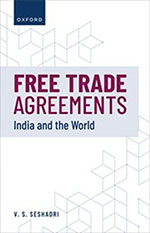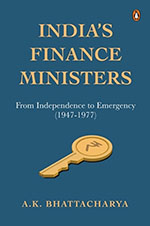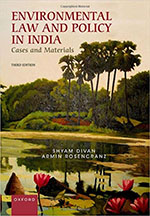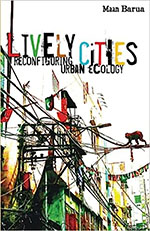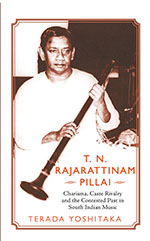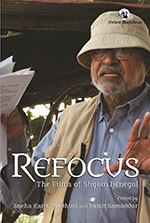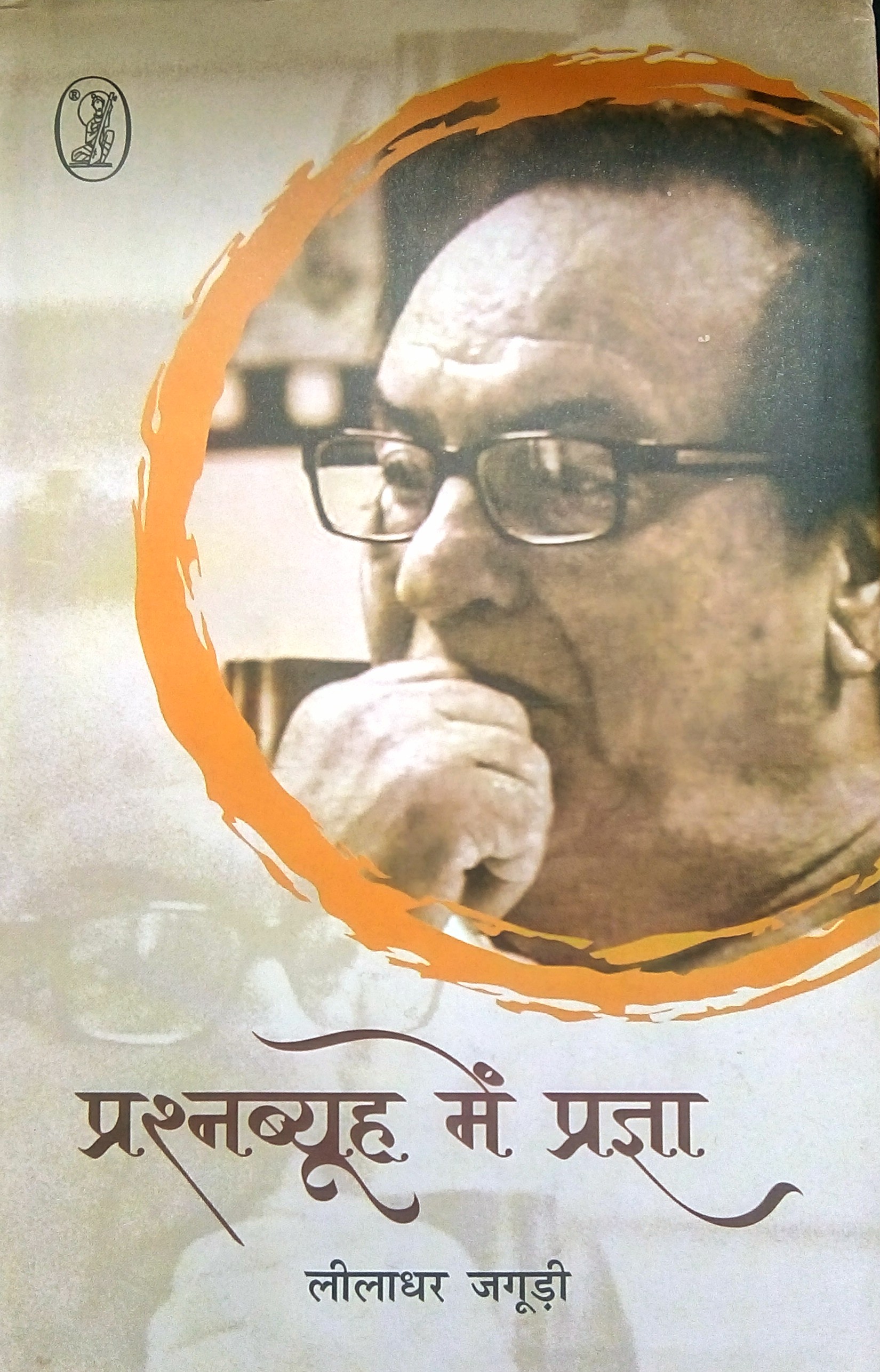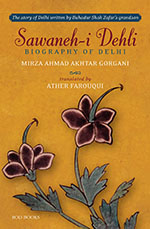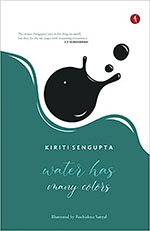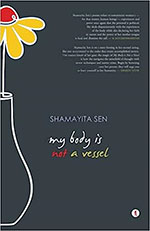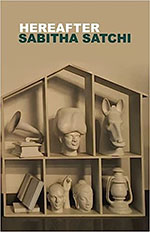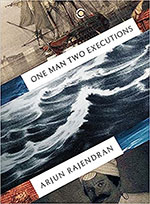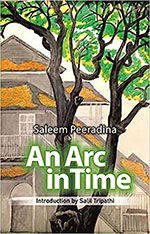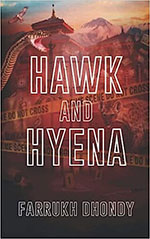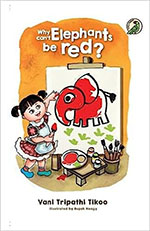Where nationalism ceases to be the movement of citizens from across society and is reduced to one identity which is given priority, this becomes a denial of the very important component of nationalism, namely, democracy and the secular.
Archives
August 2023 . VOLUME 47, NUMBER 8What Biggar has done is to pick up some aspects of the history of the British Empire on which there are writings that seek to dispute a particular point in critiques of colonialism, often taking the narrowest view of a complex historical phenomenon, to build his arguments in defence of British colonialism.
The most interesting portion of the book is the ‘Epilogue’. It primarily concerns the deliberations which took place at the administrative level. It underlines the long and intense tussle which took place between Lord Mountbatten, the incumbent Viceroy, and Sir Cyril Radcliffe, the Chairman of the two boundary commissions.
This slim volume is a sparkling crystal that could inform our celebration of the Diamond Jubilee of our nationhood.
The 39 chapters of the book cover Sreenivasan’s experiences as a family man and administrator, from his selection for the Mysore Civil Service in January 1918 to his tenure as a Minister in the Princely State of Mysore in 1943, and Dewan of Gwalior in 1946.
The book is a historian’s personal quest for a ruler who crafted himself in multiple ways and was in turn received and recast in more ways than he could have imagined. Thus, the book is really not about Ashoka who is no stranger to history and historians, but rather about how Ashoka comes through to us in stone and metal, text and poetry, scattered through the subcontinent and outside over centuries.
Herman Tieken’s command over the source language Prakrit and the Brahmi script is writ large in the book. His training in classical Kāvya literature led him to view the inscriptions as a literary corpus. The book in some ways offers fresh perspectives, even though one may disagree with one or two.
2023
What comes out clearly is the extent of the work and influence that Kumkum Roy’s own research have had on a range of aspects of early Indian history—gender, of course, but also questioning the texts, minutely, meticulously and critically examining these texts, and then developing new ways of understanding the past.
Lambah’s book is a treasure-house of facts and insights and a must-read for anyone interested in India’s foreign and security policies and subcontinental politics
This book is about the various Chinese professionals who came to India during the Second World War and resided in India during that time. This was the time when close to 100,000 Chinese nationals were in India which was the highest ever in history.
These fifteen essays by Pakistani-origin women in this collection,Ways of Being, break this mould. Ruminative, reflective, often very introspective, they are honest, thoughtful examinations of our present realities; of personal fates; of ‘Life’ in both its grand and paltry confusions.
In this work, Seema Alavi addresses the ‘overwhelming silence’ and the ‘invisibility’ of Arab polities and dynasties in the historiography that reflects an ‘unabashed Eurocentrism’. The inability of ‘mainstream’ scholarship to make sense of the unique structures of state power that shaped the Ocean’s political culture has been brilliantly exposed in this work.
This book details the debates on some of the key issues in the Constituent Assembly and the interventions made by the members who were women. (It repeatedly refers to them as women members, this is at odds with the current practice that eschews such ways of referring to people as lady doctors or women cricketers and so on.) Of these issues, the author attaches considerable importance to the question of separate and joint electorates.
Scott R Stroud succeeds in arguing a Deweyan Ambedkar: Did Ambedkar have one intellectual interlocutor throughout his life? Was Ambedkar’s world mediated through Dewey? It is however a well-argued book, theoretically rigorous which systematically conceptualizes Ambedkar’s pragmatism.
Identifying the core areas and patterns, the authors set out to unravel the contemporary context of mediatization of public life leading to the emergence of media-public or info-public. New keywords like Twitterati, WhatsApp-publics, Media public, Info public, though coming to limelight, mediatized public sphere continues to follow the ‘pre-existing grammar of political mobilization’
As is well known, after his return to India in 1915, Gandhi launched the noncooperation movement in the 1920s and the civil disobedience satyagraha in the 1930s. These were the decades when the loin cloth-clad Gandhi was viewed as a bit of a rustic rockstar by the people of Tamil Nadu. Wherever Gandhi travelled in the old Madras State, people would get wind of his whereabouts and proceed to mob him in hundreds or thousands.
Editorial
The merit of the study is that it breaks the stereotype of the analysis of the State’s contemporary politics from a myopic view of religious identity.
Despite several biographical works on Azad, a definitive biography was still awaited because the previous biographers had not explored adequately the Urdu writings of Azad and other such sources. This new biography by S Irfan Habib, a Delhi-based historian with a firm grasp on the Urdu language attempts to fill the gap by uncovering some of the enigmatic aspects of Azad’s life, thought and politics. In doing so, he has made extensive use of Azad’s works in Urdu and brought to the fore the enriching and curious facts associated with him.
Desai’s introspection in this book is of a deeper significance and for that reason should be of utmost importance to any thinking person within and beyond ideological boundaries. Modi’s India would have to wake up from its euphoric slumber and grapple with the truth that economics is about people and not about growth rates, though the relationship between the two is a complicated one.
The book provides a commentary on the relevance of the growing numbers of free trade agreements among different countries in the global economy, with a special reference to India. FTAs have a lot of significance for India. This is not only when India participates in such arrangements with one or the other trade partners but also without direct participation.
Being a highly experienced journalist who covered the Finance Ministry for close to three decades, AKB has also been able to focus on the key events of each tenure which shape our recollections and perceptions of the tenure. This releases the book from the tyranny of the ‘one-damned-thing-after-another’ school of history.
The book is the outcome of a singularly complicated remit, whose complexities are duly reflected in its structure. The question is, does it fulfil this remit? In my view it does so most satisfactorily. And scholars, activists, and even members of the public who seek a deeper understanding of environmental law will be greatly benefited by the way it seeks to foreground the black-letter legal narrative against larger social, economic, and political issues, particularly through extracts culled from appropriate secondary literature.
In his book, Maan Barua goes beyond the traditional focus on the old and new in modern urban life, introducing a discourse that integrates ecology and the role of non-human life in shaping the political dynamics of urban development. This challenges the fundamental understanding of what constitutes the ‘urban’ and the ‘city’, transforming our understanding of urban ontology.
We tend to disassociate musical performance from social analysis and stratification, concentrating on the excellence of performance. The story of Rajarattinam Pillai is about a musician who was one of the greatest musicians and performers of Carnatic music, and who as a player of the Nagaswaram, consciously faced and addressed the contentious issues and intersections between musical performance, hierarchy and caste.
General appraisal of Benegal’s films is easy to find. Refocus, as appropriately named, highlights certain trends and brings to our attention some of the less-discussed aspects of his creativity. Serious students and researchers of Indian cinema will find this book of great value and relevance.
The ingredients of poetic sensibility compel a writer to see a little more than others can see and dig a little deeper than usual sense-perception may allow. Leeladhar Jagudi’s work and wisdom highlights this tender balance between living and writing. In this anthology of interviews Prashnavyuh Mein Pragnya, Jaguri talks of poems, poets and the translation of an observation into a creative composition.
Farouqui’s translation of Sawaneh-i Dehli is a cultural, archaeological, historical treatise since it is not limited to simply translating the text from one language to another but also painstakingly locates factual errors in Gorgani’s original text and has elaborate explanatory footnotes: as Farouqui points out in his Preface, Gorgani knew very little of history.
As a monk, tired of seeking the divine elsewhere, looks within and finds his way back, Sengupta follows a trail of breadcrumbs strewn in his path to move back to his cloister. If we see through the black humour in these poems, we will know the poet is weary in his critical gaze and all he needs is rest. But resting is possible only in the midst of nature, or specifically, in the tenderness of Bengal’s mud and grass.
Sen does a wonderful job at simultaneously being a feminist and a humanist. Her poems offer as much of an immersive experience into what it means to be a woman as they tap into the sorrows and longings common to all. My Body is Not a Vessel both provokes and consoles, and takes us out of ourselves while doing it.
2021
Sabitha Satchi’s debut poetry collection Hereafter surpasses all expectations from a first book. Hereafter is the work of a seasoned pen, with well-chiseled poems, backed with profundity of thought. The artwork in the book including the cover image is by the Kerala film maker and artist KM Madhusudhanan. Selections from Madhusudhanan’s ‘Oedipus Series’ separate the different sections in this poetry collection.
If you’re also caught up in the tug-of-war between the history of Mughals in India and of that of the Rajput kings stirred by current politics, Rajendran’s poetry of the French colonial past in Pondicherry will come as a great relief! The poetry collection which starts with over 30 poems stretched across a decade in Pondicherry, offers an insight into the lives of natives and colonials, couched in multilingual verses with heaps of historical references.
2022
Rarely does one come across a book that stirs up one’s curiosity and inspires one to explore the author’s entire corpus. An Arc in Time (2022) is Saleem Peeradina’s most recent and compelling gift to the literary world. Blessed with a multi-faceted personality, Peeradina dons many hats: writer, journalist, editor, painter, ethnographer, critic, and professor.
2022
Hawk and Hyena is a short memoir of Charles Sobhraj, the infamous serial killer, written by Farrukh Dhondy. Farrukh Dhondy is not an unfamiliar name in the literary, journalistic, television and film industries and he is known for his writings across several genres including biographies, children’s literature, novels, screenplays and more.
2023
Dark Rainbow, a debut novel by a young author, Naina Gupta, an Indian native who currently lives in Dubai, is a fantasy grounded in reality, loaded with humour and sarcasm. It delves into the psyche of the protagonist Ernaline Volkov, 16, as she wanders around the locales of New York city trying to unearth secrets about her mother, Dalia Volkov.
Here’s a question for you to mull over—why can’t elephants be red? Why not, indeed! Everything is possible in the multi-coloured fantasy world of a child.

